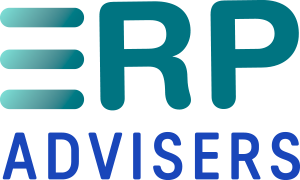Home | ERP Revolutionary Changes in 2020
ERP Revolutionary Changes in 2020
Part 1
What opportunities do ERP’s see? Unparallel opportunities to transform and improve efficiency to capitalize on. It’s important for Chief Information Officers to utilize this window of opportunity by preparing sourcing strategies, technologies and skills, with appropriate expectations.
What’s changing?
1. A new era or ERP, EBC “Enterprise Business Capabilities”. We are shifting, making use of new capabilities for application platforms, integration and low-code/no-code development.
2. Fundamental new ways people acquire new capabilities from applications.
3. Artificial Intelligence (AI) and Machine Learning (ML) will be a part of every ERP business plan, using multiple business processes.
4. Cloud ERP, it’s never been easier.
What should Chief Information Officers do next?
Be open and embrace new technologies and keep utilizing existing applications that play a vital role. Artificial intelligence and machine learning offer business opportunities never seen before, investigate and integrate them into your business to increase revenue. Make sure you’re willing to commit fully when implementing a new platform to see best results.
What do you need to know?
Gain insight into the upcoming business challenges and the unparallel opportunities that are available from the new ERP>EBC. AI and ML offer more diversity and an increase in productivity, that increase the speed and the adaptability your business offer. ERPs can help you rise to the challenge and help implement new systems and methods. There is a need to simplify integration and capabilities.
How a new ERP platform can help your business?
Moving away from self-maintenance of point-to-point integration and adopting platform as service (PaaS) and integration platform as a service (iPaaS). ERPs will change the way you do business using the same applications, yet incorporating new capabilities or acquiring new services, or a combination of them.
New simplified platform technologies can be implemented, low-code development, process automation and the capability of running multiple applications on multiple platforms in the cloud.
In a competitive market creating a strategic plan to implement new systems will allow your company to gain the market share. Use applications, data and processes rather than integration technologies alone. On-demand “modeling” environment needs to replace the sandbox, which can contain old data.
Incorporate predictions and stay ahead of the learning curve to implement artificial intelligence and machine. Be prepared, updates and vendor capabilities will be happening quickly. Source educated talent and skills for a smooth implementation to automate and create smoother business transitions. Derive a strategic ERP plan to utilize these new platforms that enable a smooth transition and new capabilities. New ERP solutions and capabilities are a welcomed and exciting change that can increase your bottom line.
Customization, implementing new system processes ensures your business is on top of the curve.








